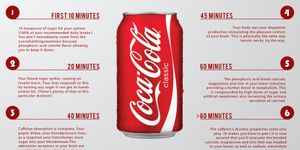President Obama Wants to Out-Do China's Supercomputer in the U.S.
It would seem as though the U.S. is behind in terms of technology. The U.S. sources just about everything from China when it comes to modern electronics, and this one fundamentally upsetting fact understandably makes China very good at producing computer parts and learning how to make them better.
The result is that China has the world's fastest supercomputer, known as Tianhe-2, and it can perform at a speed of 33.86 petaflops thanks to the hard work of 1300 hard-working computer engineers.
Now that China has had its spotlight, United States President Barack Obama would like to bring the U.S. back to the top of the food chain and have the world's fastest supercomputer right here in the United States.
The President has officially signed an executive order authorizing an initiative called the National Strategic Computing Initiative (NSCI) that, with a little hard work and good luck, should be able to produce the world's newest fastest supercomputer several times faster than China's Tianhe-2.

"Today, President Obama issued an Executive Order establishing the National Strategic Computing Initiative (NSCI) to ensure the United States continues leading in this field over the coming decades," a blog post by the White House explains. "This coordinated research, development, and deployment strategy will draw on the strengths of departments and agencies to move the Federal government into a position that sharpens, develops, and streamlines a wide range of new 21st century applications."
"It is designed to advance core technologies to solve difficult computational problems and foster increased use of the new capabilities in the public and private sectors."
The goal is to get the new supercomputer operating at an exaflop by 2025, which would dwarf China's Tianhe-2. One exaflop is 1,000 petaflops, which means the new supercomputer would be almost 30 times faster than China's Tianhe-2.
The initiative will bring together various government agencies that have typically worked alone on separate projects and allow them to work together going forward, hopefully allowing for more useful results, after all, there is power in numbers and two heads think better than one.
Uses for a supercomputer of this caliber can only be speculated, but one possible use is figuring out how the brain is able to process information so quickly, and further expanding brain research, while other speculations suggest it could be used to better predict weather, help with cancer research by using complex algorithms to cross match medical records, or even help NASA with their growing needs for space research.
Source: White House Blog








